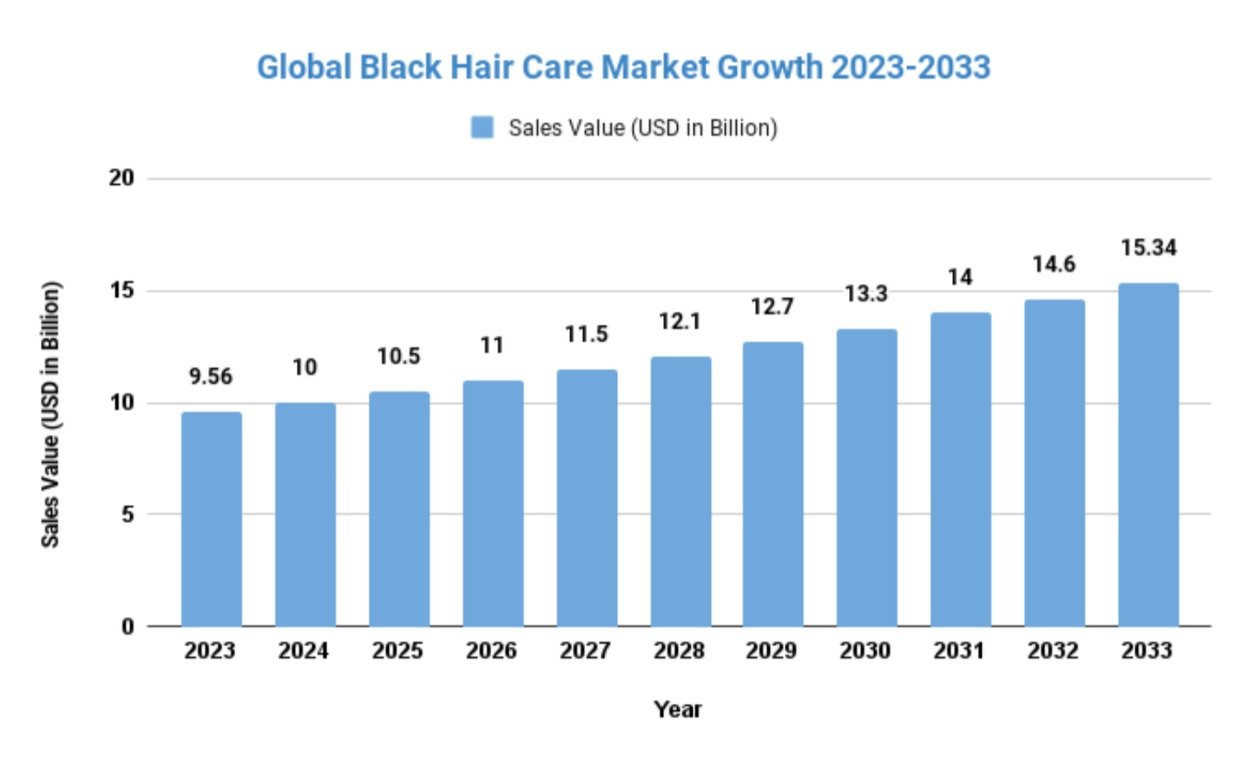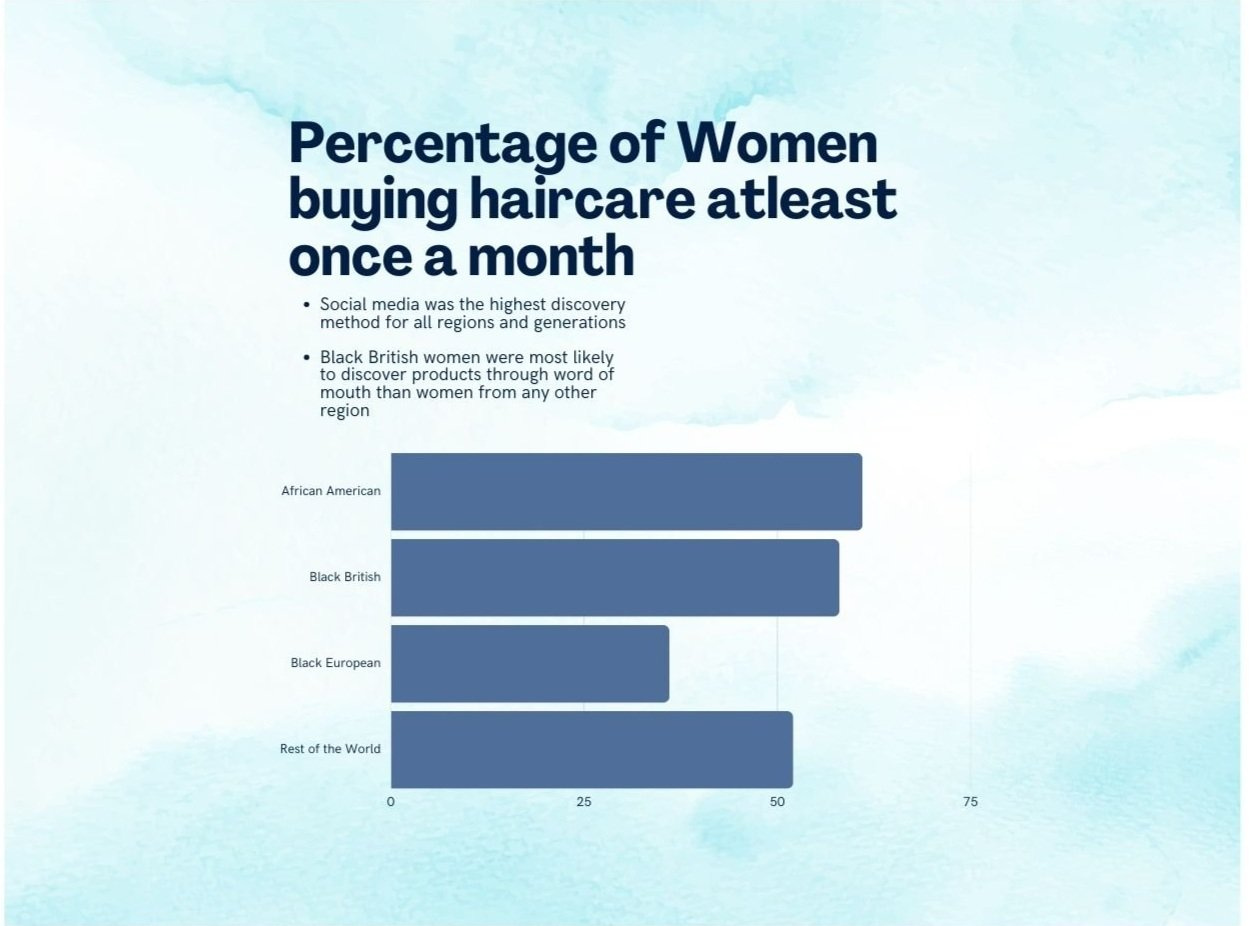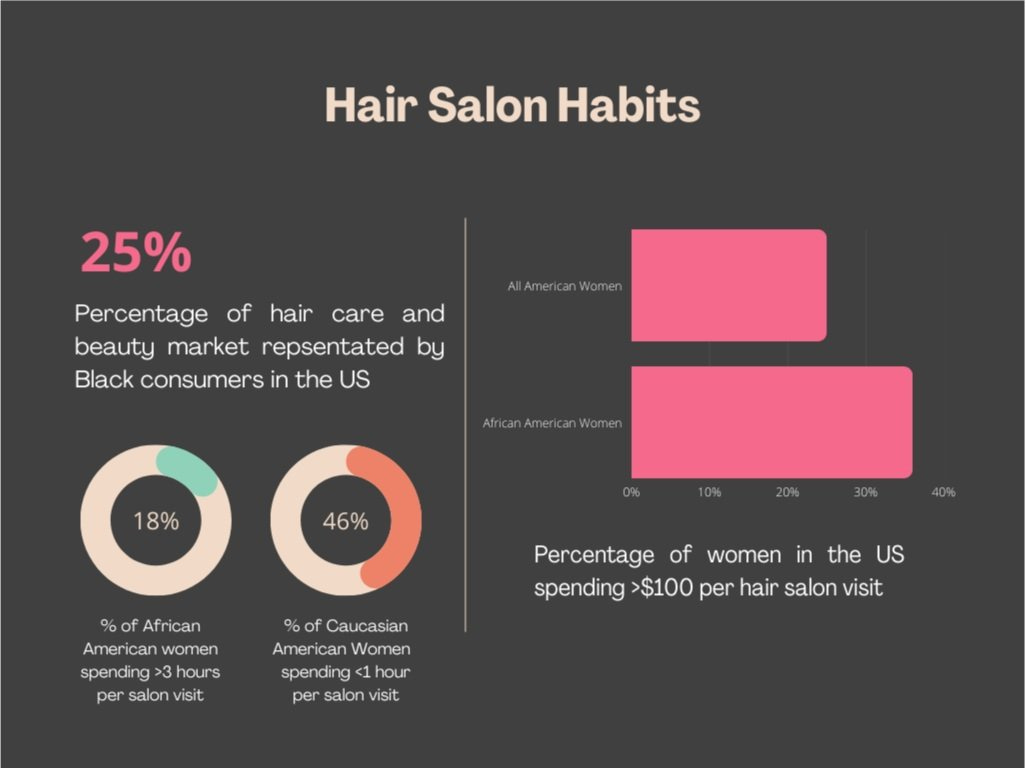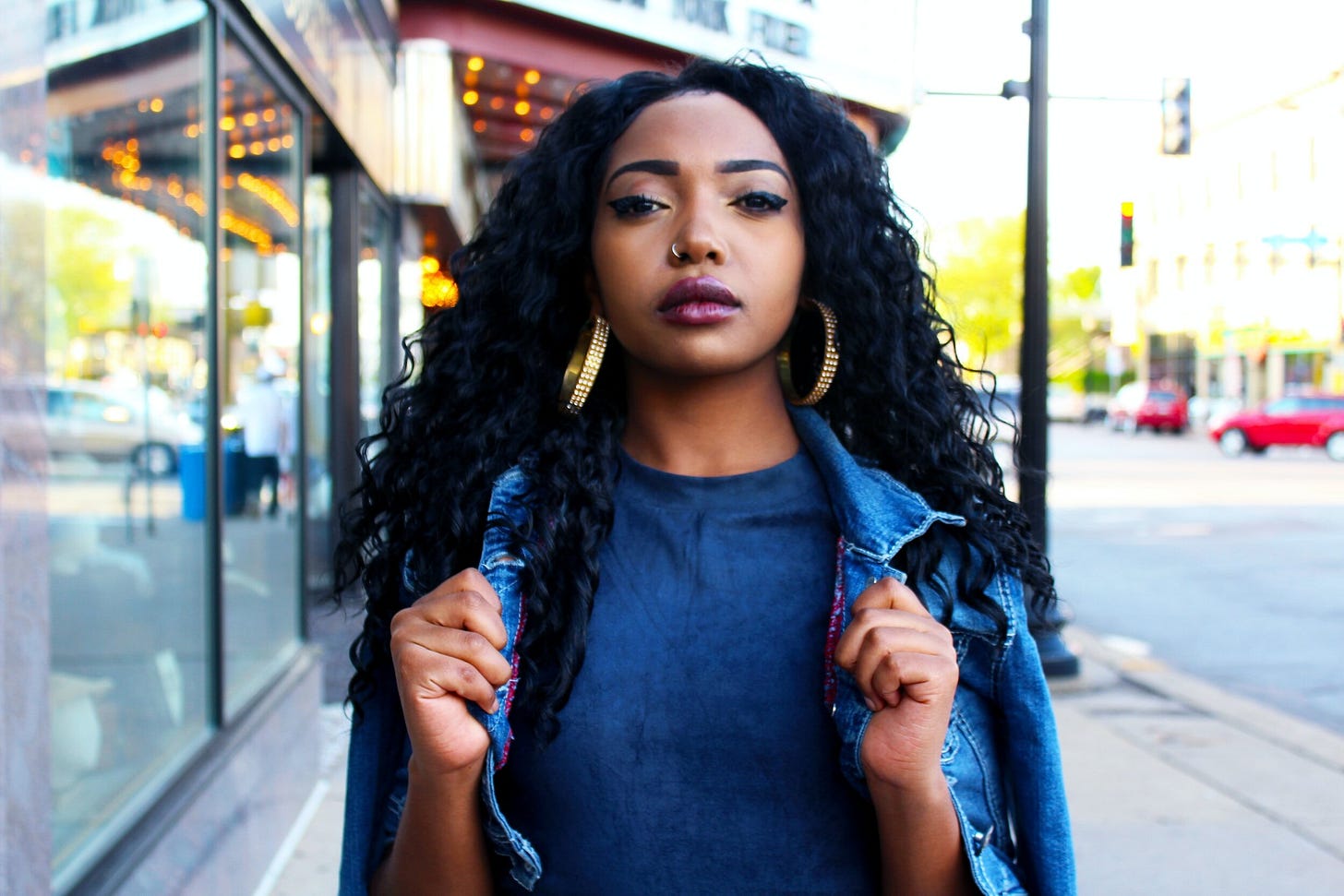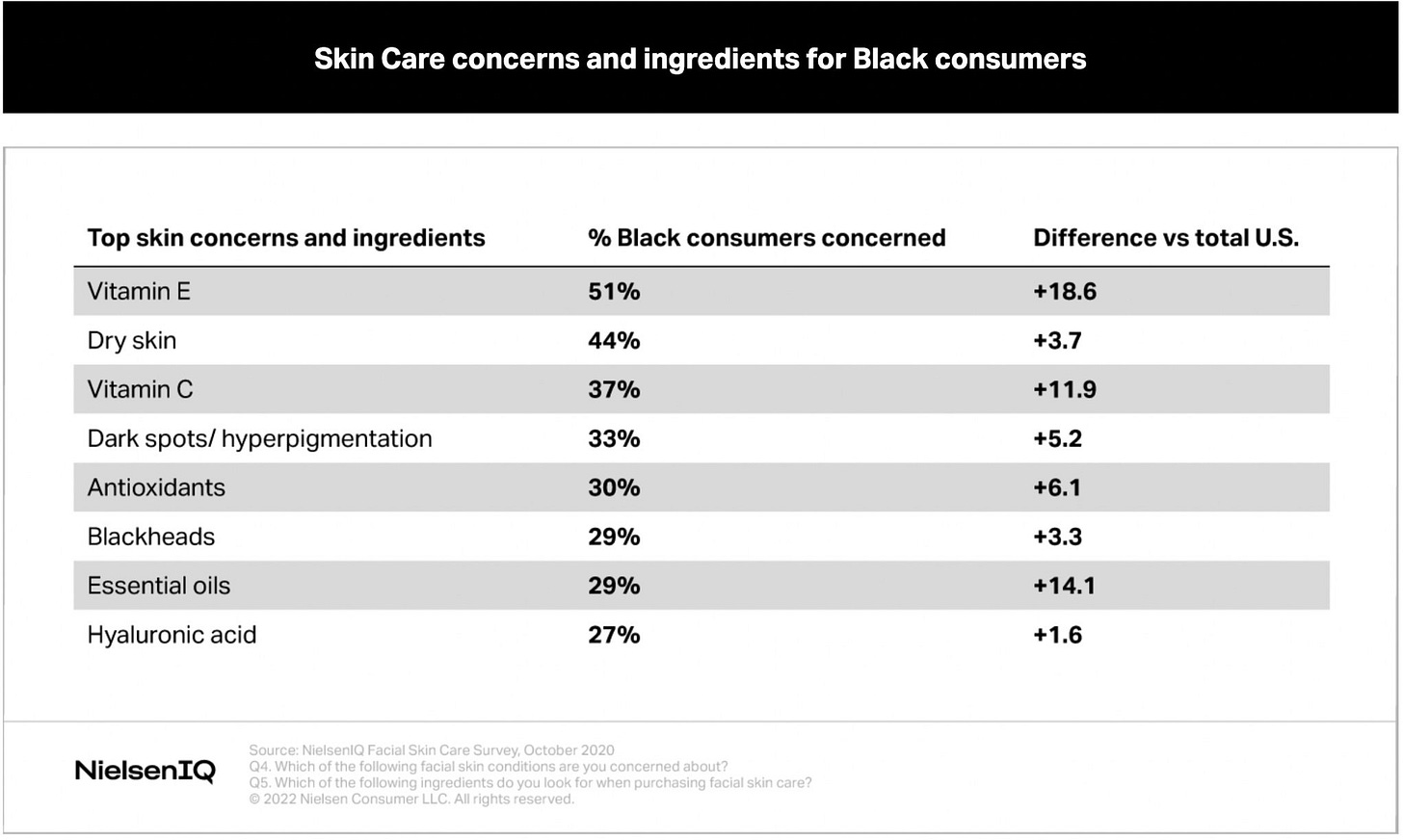Hair is Everything : Tapping into Black Buying Power in the Global Hair Care Industry
Heads up, those of us who not privy to the challenges and the cost involved in textured hair care today will find the following insights, fairly mind boggling. To begin with the series on “Beauty” and how it is evolving across various cultures and markets today, we are going to first deep dive into the black hair care market and its massive buying power.
We don’t have to go very far, the numbers reveal wide gaps and disproportionate equity between consumption and what’s on offer. Despite heavy spending, the equity of representation of textured hair care in the hair industry is practically non-existent with offerings in textured hair industry remaining to be fairly selectively despite the market demand.
In this first chapter of this Edition, we explore the size of the market and the challenges and representation. We end with strategies on how brands and retailers can stop leaving money at the table.
An industry that surpasses expectations
The textured hair care market is growing phenomenally every year.
In the US
It is estimated to be USD 2.5 Mn, contributing 20% to the hair products market.
Black Americans yearly spend 18% of their income on ethnic hair care products.
Studies show that, among black consumers, financial status makes no difference in hair care product purchases.
II. In the UK
Black adult women in the UK account for 10% of haircare spend, but constitute only 2% of the UK adult population
Black British women spend £168Mn a year on hair products
A study by Habia revealed that there are 35,704 beauty salons in the UK, but there are only 302 Afro-Caribbean salons, although this study doesn’t account for mobile hairdressers or hairdressers that work from home, which is the route many Black women choose to take.
African American consumers are the driving force behind the growth in the hair care and beauty industry in the US, spending nine times more on hair care products than other ethnic groups and accounting for 25% of the total market.
How can brands pivot to tackle this gap in the market
Organisation
Training: There is clear distinction in the textures and needs of black women across geographies. In order to have nuanced understanding of the type of textured hair, and to remove cliches and generalisation in products, for example, using type 4a as stand-in for all textured hair type like some American brands do, a strong training program is necessary.
Inclusive Teams : Increasing black representation throughout the organisation is critical, but not just at entry-level positions. It is important to have equity in representation in decision making roles to solidify this approach.
Products
Research: There is ample research already done on what ingredients are more suitable for textured hair types and what are usually searched by customers online. Like this study by LookFantastic. Below is a study by Neilson that indicates the top product ingredients consumed by Black customers, and variance from the average consumption in the US.
Authenticating the research: It is important that the research focusses on a diverse group of black women, since not all textured hair is the same. They should be able to vouch that the product range and communication resonates amongst the diverse hair care lived experiences of black women. It is important for brands to have diverse internal and external representation, as the research shows people to believe that the person propagating the product has to have the same hair texture and similar hair experiences for them to have produced an effective quality product.
Marketing
Tapping into influencers: Almost all of black hair care products are bought at speciality stores and salons, which can be hard to locate. However, social media has played an important role not only in revival of black hair care traditions but also in discovery of new brands, which has led to a surge in demand. Building a strong network of legitimate black influencers that love and support the brand will help draw in new customers and build a strong brand culture.
Consistency in communication: Consistency of marketing efforts, such as campaigning regularly and using the right language remain evident, as it builds long-term trust and shows the consumer that the brand is interested in meeting their actual needs. This would mean consistency across all customer touch-points; from online, retail stores, paid advertising and investing in trained customer support.
Salons as Stockists: Less than 1% of salon in the UK carry textured hair care products. This invariably means that black women have to travel farther to access products that they need. This is an easy gap to close, by mapping salons with black hair care expertise, and also tapping on central locations within cities where salons can also operate as stockists.
Shelf presence at parity with population: As we now know that Black specialty stores and boutiques have been the primary stockists for black hair care products. In most large format stores very few beauty products offered on the shelves are run by Black entrepreneurs or are black hair care focussed. The percentage of quality Black hair care products on shelves can be increased, at a minimum, to reach parity with the share of Black representation in the population. For example in the US, the nonprofit organisation Fifteen Percent Pledge urges retailers to dedicate at least 15 percent of their shelf space to products from Black-owned businesses.
Invite a friend: A significant percentage of Black women across geographies have stated that they are highly like to try a product through word-of-mouth. A referral program will help not only build a community of loyal customers but also increase customer acquisition.
References:
https://www.mckinsey.com/featured-insights/diversity-and-inclusion/a-300-billion-dollar-opportunity-serving-the-emerging-black-american-consumer
https://nielseniq.com/global/en/insights/analysis/2022/attracting-black-beauty-consumers-in-2022/
https://blog.gitnux.com/black-hair-industry-statistics/
https://www.mckinsey.com/industries/consumer-packaged-goods/our-insights/black-representation-in-the-beauty-industry
https://afrolovely.com/black-hair-industry-statistics/



